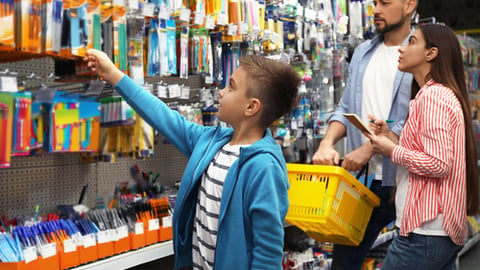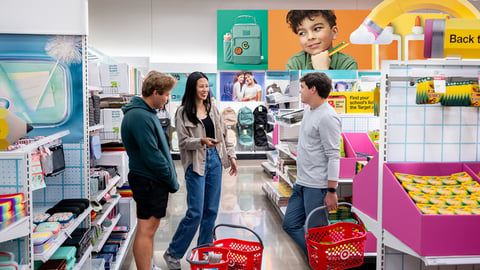Parents Prioritize In-Store Shopping, Value for Back-to-School
Consumers expect to spend 17% more this year on back-to-school items when compared to 2024, with shoppers shifting toward brick-and-mortar stores to obtain needed items, according to a new survey from JLL.
The survey of more than 1,000 parents found that more than 90% of respondents will shop in stores to purchase items for their children heading back to the classroom later this summer.
More than 56% of parents are concerned about back-to-school products being available when they shop. The largest portion of parents are shopping earlier, with 45% starting before June, a 12-percentage-point increase from last year, due to inventory shortage concerns. July is the next most popular month.
"Physical stores continue to play a crucial role in back-to-school shopping, with a majority of consumers planning in-store visits while starting their shopping earlier than ever," said Naveen Jaggi, president of Retail Advisory Services at JLL. "With July emerging as the second biggest shopping period behind the holiday shopping season and parents expressing inventory concerns, retailers offering competitive pricing and robust selection are positioned for a particularly strong July as families complete their back-to-school purchases."
Nearly one-third of parents will shop across three or more channels, showing multi-channel strategies remain essential, but fewer families are choosing delivery options than in past years. Malls and open-air shopping centers are experiencing increased popularity, with 46.6% of parents planning to visit two to three retailers to complete their shopping.
"The continued strength of mall and open-air shopping center traffic reflects parents' desire for efficiency and value this season," said Kristin Mueller, president of Retail Property Management at JLL. "With nearly half of parents planning to visit multiple retailers in a single location, shopping centers are perfectly positioned to deliver the variety, experience, and cost-saving opportunities families are seeking during this high-traffic back-to-school season."
Mass merchandisers such as Walmart, Amazon, and Target remain parents' top choices, with 70% of shopping decisions driven by cost-saving opportunities. These retailers attract parents seeking both budget relief and one-stop shopping convenience, with 11.3% planning to shop exclusively at mass merchandisers, significantly higher than any other store category. This shift reflects how inflation concerns are driving families toward retailers that offer both affordable prices and extensive merchandise selection.
Parents with elementary school children are more likely to shop at mass merchandisers than other grade levels. Parents of middle schoolers were more likely to shop online. High school parents were more likely to shop at sporting goods stores and apparel stores. Parents with college students were more likely to shop at office supply retailers, department stores, and electronics stores.
Modest-income parents (earning less than $50,000) will shop more at dollar stores and thrift stores. Notably, high-income shoppers will also shop more at these retailers than last year. High-income parents are also relatively more likely than other groups to shop at single-category stores like apparel, electronics, sporting goods, and home goods stores. They were also more likely to shop at wholesale clubs and department stores.
"Parents are increasing their per-child spending from $329 to $386 this school year, but they're strategically directing those dollars toward mass merchandisers offering both value and selection," said Keisha Virtue, manager of Retail Research at JLL. "With inflation concerns driving 70% of shopping decisions, parents are maximizing their budgets by focusing on retailers that deliver both necessities and cost-saving opportunities."




